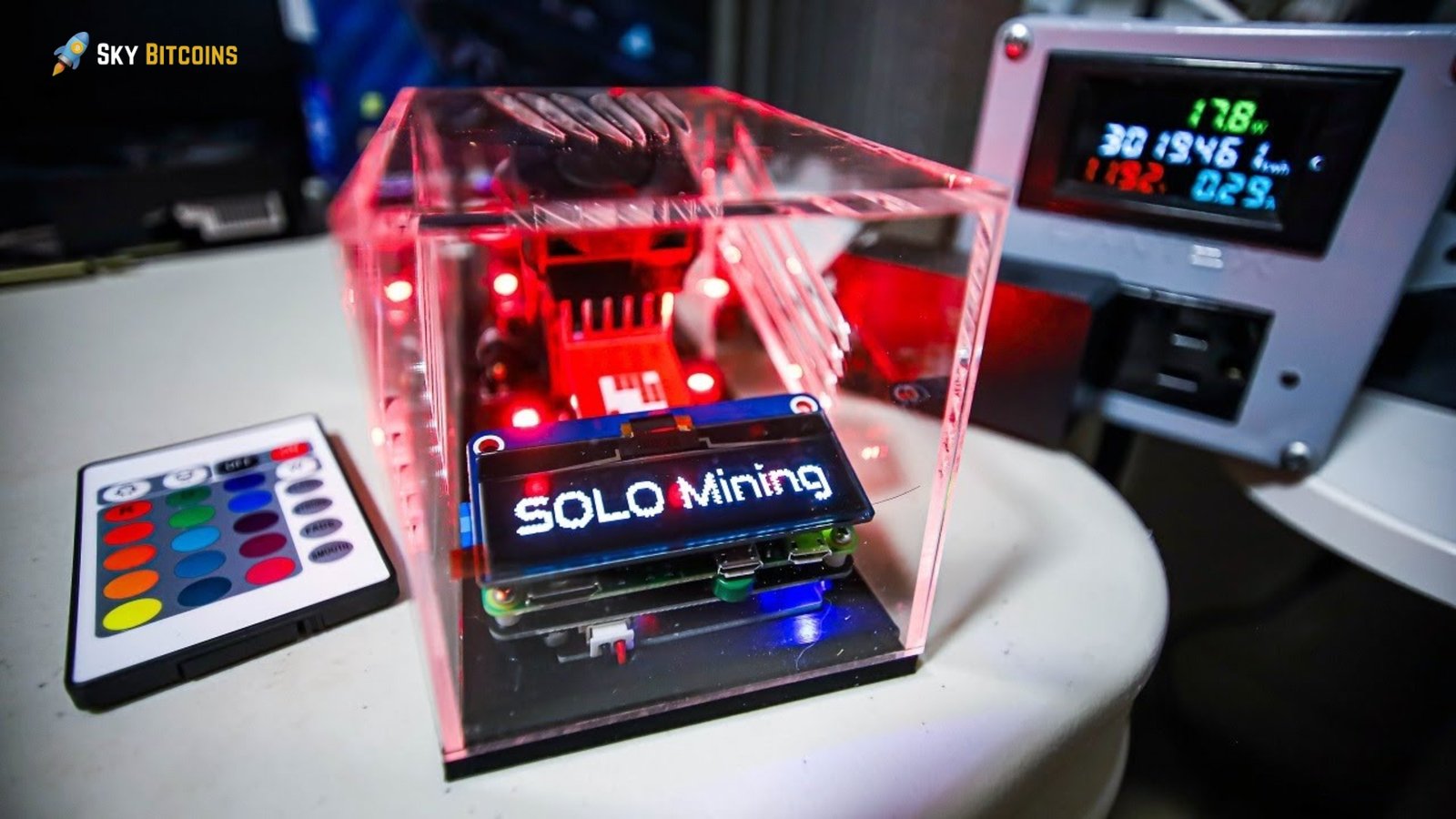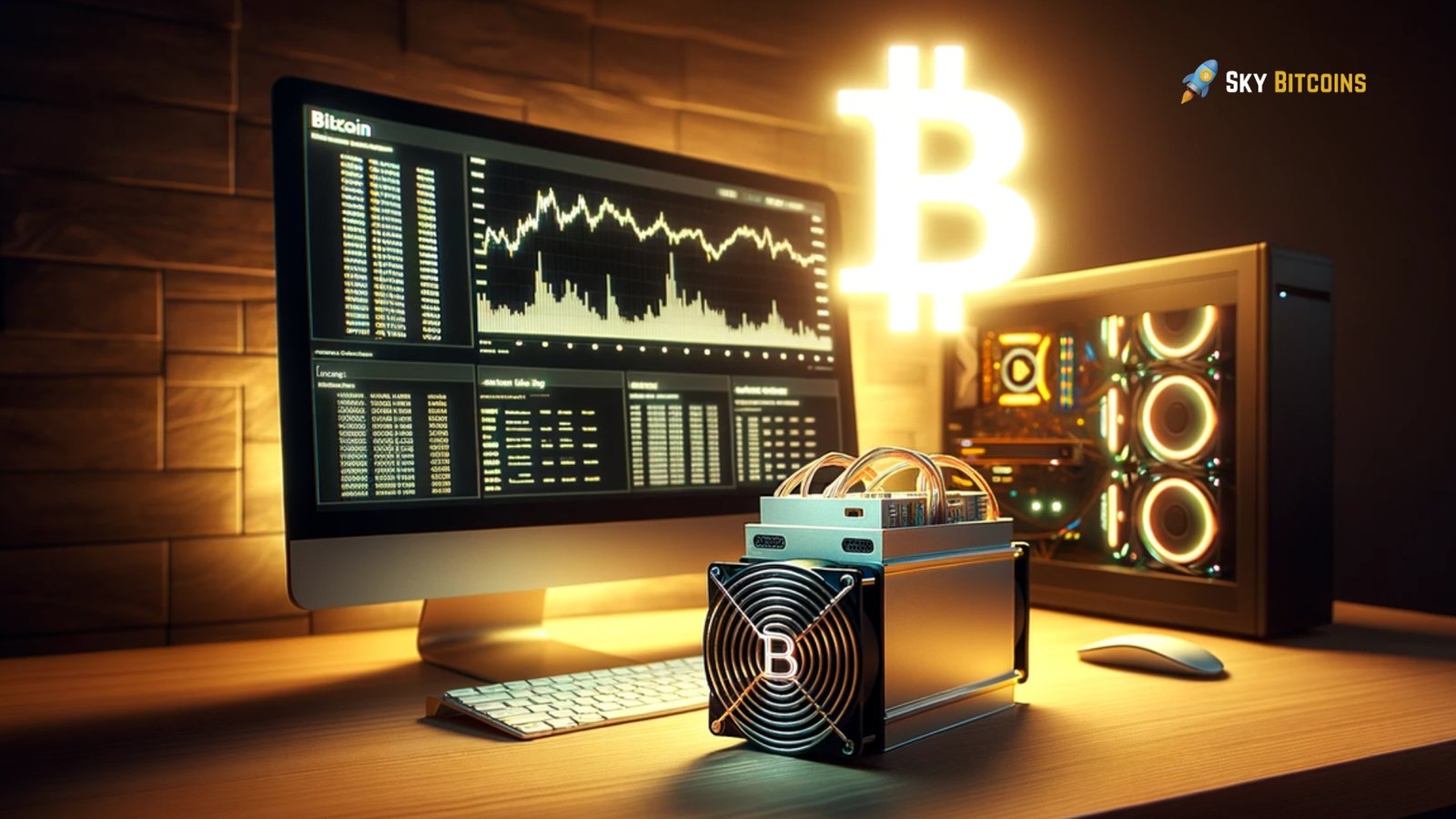Solo Bitcoin mining, popular in the past, is now highly challenging and competitive. Many people in 2025 think it’s a risky but potentially lucrative venture. High starting prices and increasing energy expenditures are only two of the many problems solo miners face due to the proliferation of large-scale mining farms and mining pools. But many are still enticed by the idea of being able to keep all of the block rewards for themselves.
Learn everything you need to know about Bitcoin Solo Mining, including how it works, the necessary software and gear, how much money you can make, the difficulties you could face, and the industry’s future. Frequently asked topics about solo mining will also be covered.
What Is Bitcoin Solo Mining?
A process known as “mining” verifies transactions on the Bitcoin blockchain by solving difficult cryptographic riddles. Upon successfully mining a block, miners are paid with newly generated Bitcoin and transaction fees. Miners often join mining pools to improve their chances of discovering a block. The miner’s hash rate determines how the rewards are divided.
In comparison, mining solo means not participating in a pool at all. Separate from other miners, solo miners solve blocks and keep all the rewards (6.25 BTC + transaction fees per block in 2025). The increasing mining difficulty and the prevalence of large-scale mining operations have rendered the once profitable prospect of discovering a block far less likely.
How Does Bitcoin Solo Mining Work?
Operating a mining rig alone is like playing the lottery. Each block’s reward goes to the miner, who, in a race against the clock, finds the correct cryptographic hash. Solo miners depend on their computing power, unlike pool miners, who split the rewards among themselves. The process involves:
- Running a Full Bitcoin Node: Solo miners must run a full Bitcoin node, which downloads the entire blockchain and stays synchronized with the network.
- Setting Up ASIC Miners: Miners need specialized hardware called Application-Specific Integrated Circuits (ASICs) that provide the computational power necessary to solve cryptographic puzzles.
- Mining Blocks Independently: The miner’s ASIC rigs will work on solving blocks; if successful, the reward will be entirely theirs. However, without the combined hash power of a pool, the odds of finding a block can be incredibly low unless you control a significant portion of the network’s hash rate.
Hardware Requirements for Solo Mining in 2025
When mining alone in 2025, you need top-of-the-line gear to have a shot. ASIC miners have become the standard hardware for Bitcoin mining because of their superior efficiency and high hash rate compared to GPUs and CPUs; because of how intense the competition is now, solo mining with older ASICs will probably not be lucrative.

Popular ASIC Models in 2025:
- Antminer S19 XP: One of the most potent ASICs available, offering up to 140 TH/s (terahashes per second) with a power consumption of 3010W.
- WhatsMiner M50S: A high-performance ASIC with 126 TH/s and power efficiency of 29.5 J/TH, making it one of the most energy-efficient miners.
- AvalonMiner 1366: Offers 130 TH/s and consumes around 3250W, another top-tier choice for miners.
Capacity efficiency (J/TH), which impacts electricity usage, and hash rate (TH/s), which measures computational capacity, are the critical metrics when selecting mining hardware. Higher hash rates increase the odds of successfully mining a block, and more efficient power use lowers operational costs.
Setting Up a Solo Mining Operation
Secure a Reliable Electricity Source
Electricity is the most expensive portion of Bitcoin mining, especially for solitary miners. Your ASICs’ power consumption is directly proportional to their power rating. Obtaining cheap electricity, preferably below $0.10 per kWh, is critical to maximize profitability. Some mining companies move their operations to different places to take advantage of more affordable hydroelectric or geothermal electricity.
Create a Suitable Mining Environment
Proper cooling solutions are crucial since mining technology creates a lot of heat. To avoid overheating, industrial fans or liquid cooling systems are necessary for ASICs’ ventilation and cooling needs. And because ASICs may be loud—up to 90 dB—you’ll want to ensure you’re in a quiet area.
Install Mining Software
Solo miners require software to link their ASICs to a complete node to control and monitor their mining operations. In 2025, these were the best mining programs for lone miners:
- CGMiner is one of the most popular open-source mining software options. It’s highly configurable and supports a wide range of hardware.
- BFGMiner: Similar to CGMiner but with added features like dynamic clocking and monitoring, it is ideal for advanced miners.
- Bitcoin Core: Solo miners need to run a full node, and Bitcoin Core is the primary software for that purpose. It ensures your node is fully synchronized with the Bitcoin blockchain.
Start Mining
Your Bitcoin Mining Profitable rigs will solve blocks autonomously once you’ve installed the necessary hardware and software. Without the combined capacity of a pool, mining a block alone may take months—if not years—of patience and a high tolerance for uncertainty.
Profitability of Bitcoin Solo Mining in 2025
Several criteria determine whether solo mining is profitable:
- Hash Rate: Additional processing power increases your probability of completing a block successfully. If you want to mine on your own, you’ll need a lot of hash rate, which means you’ll need numerous high-end ASICs.
- Electricity Costs: Energy use is one of the most important aspects of profitability. It may be hard for miners with expensive electricity to profit, but their margins can significantly increase in areas with cheaper energy.
- Bitcoin Price: Because the reward for mining a block is expressed in BTC, Bitcoin’s dollar worth fluctuates as the market does. Even the most efficient miners could lose money if the price of Bitcoin suddenly drops, but a spike in price can increase profitability.
- Mining Difficulty: The entire network hash rate determines how tough it is to mine Bitcoin, which is adjusted every two weeks. The difficulty of mining blocks rises directly to the number of miners participating in the network. If you don’t have much hash power, you might not make as much money when the difficulty is high.
Challenges of Solo Mining
Mining Difficulty
Solving blocks becomes more complex as the network expands. In 2025, substantial mining operations and pools will control significant chunks of the network hash rate, making life extremely difficult for single miners. Solving blocks is particularly daunting for miners lacking high-end gear.
High Initial Costs
There is a high initial outlay for application-specific integrated circuit (ASIC) hardware, cooling systems, and electrical infrastructure when starting a solo mining operation. Most profitable solo miners use many units, and a single powerful ASIC can cost several thousand dollars.
Unpredictable Income
In contrast to pool mining, where rewards are given regularly, single miners may experience extended periods without generating any Bitcoin. Due to the lack of clarity, it is a perilous endeavour, especially for miners who do not own significant hash power.
Future Outlook

The difficulty and expense of mining Bitcoins alone will only increase as the network grows. All miners, notably single operators, will have their profits further squeezed when the next Bitcoin halving, set for 2024–2025, reduces block rewards from 6.25 BTC to 3.125 BTC. Still, with the proper setup, access to inexpensive power, and cutting-edge ASIC technology, solo miners may overcome these obstacles and succeed.
Conclusion
Due to rising energy prices, network difficulty, and intense competition, Bitcoin solo mining in 2025 is still arduous and dangerous. Mining involves a high degree of risk, but the potential payoff is also high. To succeed, you’ll need to be patient, have access to inexpensive power, and invest heavily in technology.



